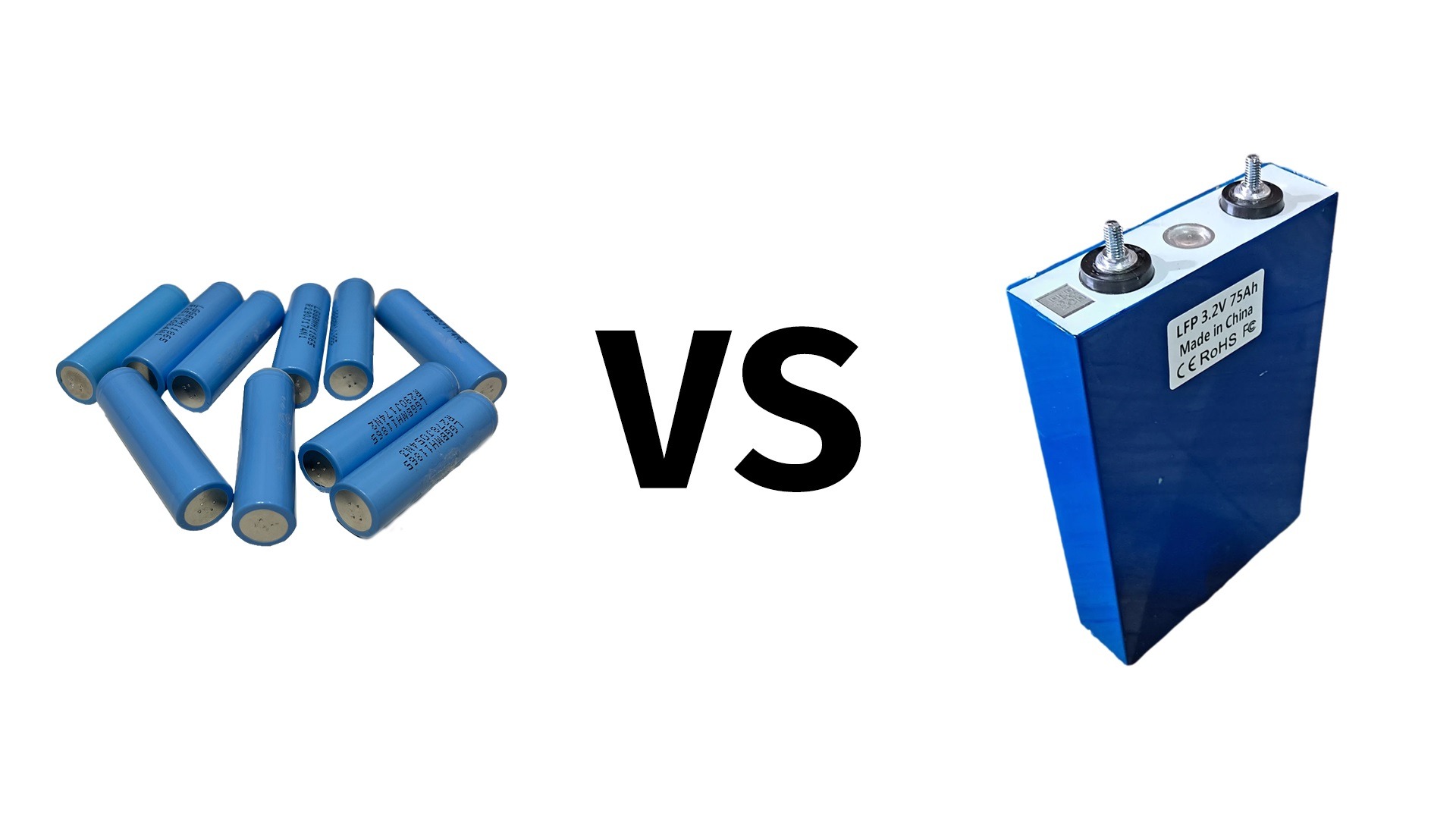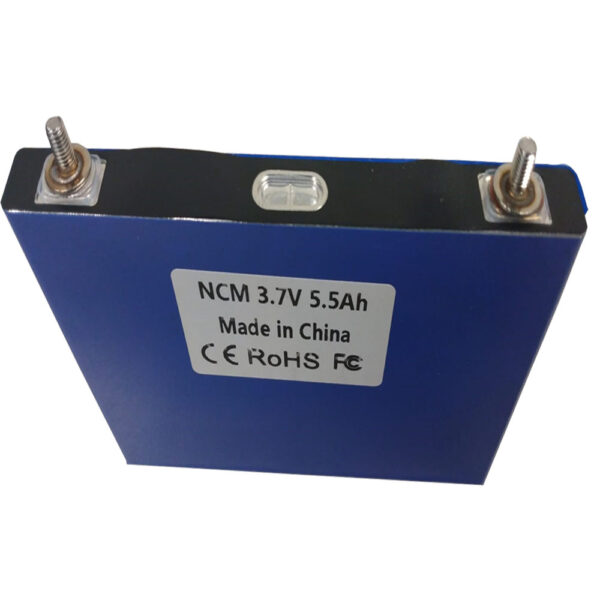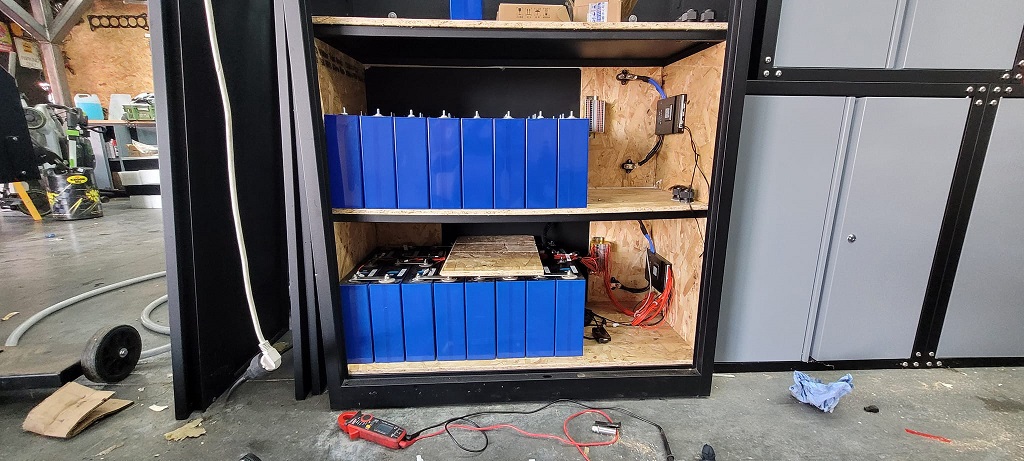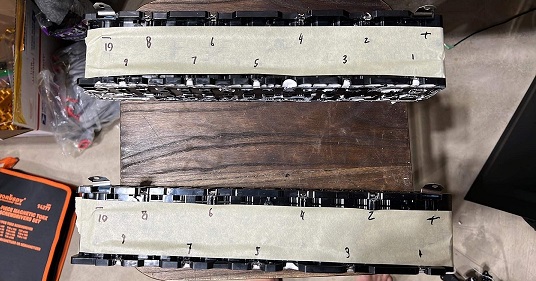
Cylindrical Or Prismatic Cells
Table of Contents
Cylindrical or prismatic cells? Which is the best option? When it comes to lithium batteries, there are 3 physical formats. There are cylindrical cells, prismatic cells, and pouch cells. The cylindrical format has been the most popular type of battery cell because it is the lowest cost and fastest to produce. There are several factors, however, that once taken into consideration, paint a picture of a prismatic future.
Cylindrical cells take up more space than prismatic cells because they are round. While the hexagonal packing of cylindrical cells nets a 90.69% packing efficiency, a 10 percent loss is a lot to cope with. Prismatic cells offer nearly 100 percent packing efficiency in square and rectangular battery compartments. Cylindrical cells are, however, much less expensive and a lot easier to get a hold of compared to prismatic cells. Also, there are more chemistry options when using cylindrical cells, as prismatic cells are almost exclusively LiFePO4 batteries.
In this article we will explain which is best for a particular application; cylindrical or prismatic cells. We will also briefly dive into the main differences between the two types of cells.
What Are Cylindrical Cells
A cylindrical cell is a battery cell that is encased in a strong metal canister. Compared to prismatic cells, cylindrical cells are small and can be easily packed into just about any shape.
Also, because of their small size, several canister cells can be put in series to achieve far higher voltages than would be provided by a single prismatic cell taking up the same space. Unlike many other battery formats, the cylinder cell does not swell. This makes them a lot safer and easier to work with.
Originally, cylindrical cells were used in laptops. These days, most laptops are too thin to house cylinder cells, so they use lipo pouch cells instead. Pouch cells vs cylindrical cells are often also debated for use in applications.
Even though most new laptops don't use them, you can still find cylindrical cells all over the place. They are used in e-bikes, medical devices, Bluetooth speakers, and even some satellites.
What Are Prismatic Cells
Prismatic cells are battery cells that have their chemistry encased in a strong metal casing in the shape of a rectangular prism. Its rectangular shape makes it ideal for stacking multiple cells together to form a large battery.
There are two main types of prismatic cells. First is the electrode sheet type. This is where the anode, cathode, and separator are laid out along the casing and stacked. The other type is the rolled and flattened type. These are more like cylinder cells on an electrical level.
As you would expect, the stacked sheet type has a higher current carrying capacity as there is more surface contact opportunity for the electrodes. Flattened prismatic cells, on the other hand, will contain more energy as they use a roll of material for storage. The downside is that the electrodes can only be placed on small tabs on the edge of the energy storage material. This lowers their maximum current carrying capacity.
Prismatic cells are generally used for Powerwall batteries or other energy-intensive stationary power systems. Their large footprint makes them a bad choice for just about any portable application.
So Which Is Better Cylindrical Or Prismatic Cells
Prismatic cells contain their chemistry in a rectangular prism shape. The outer casing of a prismatic cell is usually made of steel or aluminum. This makes them very strong like cylindrical cells while having energy densities approaching lithium polymer pouch cells. Unfortunately, prismatic cells are still much more expensive in terms of watt-hours per dollar compared to canister cells.
Regardless of which type of cell is being considered, they both have their advantages, disadvantages and use cases.
As mentioned before, cylindrical cells (and just about anything else that can be manufactured in a cylinder) can be produced faster and thus much more cheaply. Cylinder cells also have better thermal characteristics compared to prismatic cells. The main downside to cylindrical cells is that they take up more space.
Prismatic cells are designed to make the best possible use of space. They are also extremely easy to work with. It's trivial to bolt together four LiFePO4 prismatic cells together and create a 12V battery pack.
They are much more expensive than prismatic cells but their ease of use, high current carrying capacity, and efficient packing characteristics make them very attractive options for beginner and veteran battery builders alike.
Cylindrical cells are still the most common type of battery cell because of their lower cost and wider availability. The only real drawback of prismatic cells for building large format batteries is their cost.
The good news is that a lot of research and development is being done in the design and manufacturing processes that are involved in producing prismatic cells. This will, over time, bring down costs and increase availability. It will also create a pathway for more prismatic sizes because right now there are not many to choose from.
Why Prismatic Cells Might Be Taking Over
The main driving factor for the widespread adoption of prismatic cells is the EV industry. As we all know, the EV sector moves quickly and is on the hunt for a better battery solution. Right now it's a bit too early to say one way or the other if cylindrical or prismatic cells will become the most dominant battery for electric vehicles.
There is promise in prismatic cells and an opportunity to reduce cost. This comes from the fact that the prismatic format creates the possibility for much larger-capacity cells. This would reduce the total number of connections that need to be spot welded, which drastically reduces the complexity of the battery build while lowering the number of potential failure points in the system.
Also, Prismatic cells are much more common to be lithium-iron phosphate cells. Unlike many other lithium-based batteries, LFP cells don't rely on rare materials such as cobalt and nickel, which are factors that help stabilize the cost of LFP cells. So, as manufacturing ramps up, the cost of these cells is bound to come down.
LFP prismatic cells are gaining popularity quickly in Asia. Also, some EV manufacturers already use LiFePO4 batteries, which is the most common chemistry to find in the prismatic format. Even Tesla is using them, as they recently announced that it has started using prismatic cells for its standard-range vehicles.
LFP chemistry is not perfect, so there are some cons associated with it. LFP cells contain less energy than more common cobalt-based cells. This means that they cannot be used for extremely long-range applications.
Prismatic Cells in Energy Storage Systems
Energy storage systems such as small home batteries or complete DIY power wall solutions are becoming just as important as electric vehicles. There are already several energy storage systems that rely on prismatic cells on the market. It's just a matter of time before these cells come down in cost and the LFP cells used to power them become more standard and available.
Conclusion
Regardless of if you are new to batteries or an experienced 18650 battery builder, knowing whether to use cylindrical or prismatic cells can be a challenging choice to make.
While it’s true that cylindrical cells take up more space than prismatic cells when packed into a battery pack, they are much cheaper and easier to find on the market. Prismatic cells, on the other hand, have a nearly 100 percent packing efficiency which makes them ideal for large batteries where energy density really matters. Prismatic cells are almost always LiFePO4 chemistry, and sometimes that will not work for certain applications. As with most battery engineering choices, the choice of using cylindrical or prismatic cells really comes down to the use case and budget. Prismatic cells are more expensive, but production of these types of cells is ramping up so that fact won’t remain forever.
We hope this article helped you determine which to use for your battery project; cylindrical or prismatic cells. Thanks for reading!




